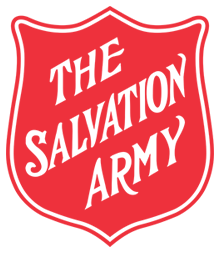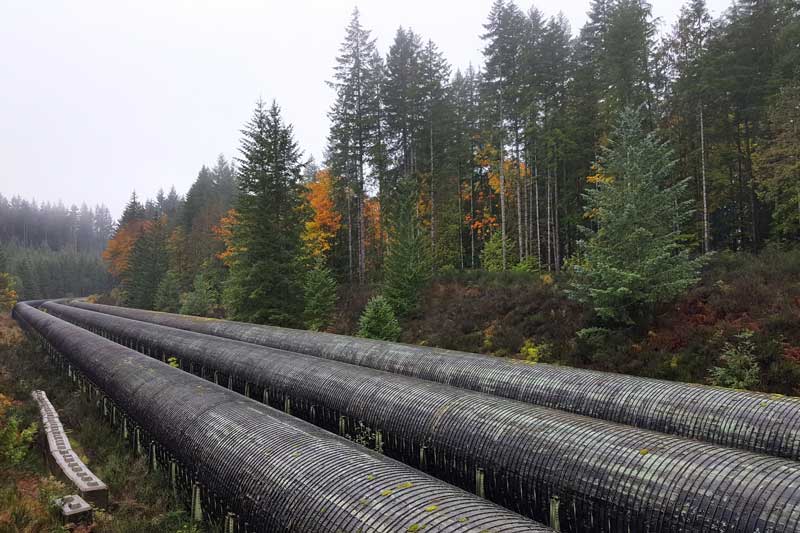I was sitting in front of a glowing fireplace when my phone made the familiar “ding,” letting me know a text had arrived. “What does the hashtag ‘We stand with Wet’suwet’en’ mean?” it said.
My husband, Damian, and I have been working with youth in northern British Columbia for a decade. The text was from a young woman involved in our ministry at The Salvation Army’s Camp Mountainview.
When I received the text, I was many kilometres away from Wet’suwet’en land, but my thoughts were travelling there every time I heard the news. With every story of the standoff between protesters and a proposed pipeline project, my concern grew for Wet’suwet’en families.
Every summer, many Wet’suwet’en people visit and work at Camp Mountainview, which sits on their land. They remind me to walk gently on the earth, because the 125 acres of the camp are sacred land entrusted to the Wet’suwet’en people by God.
So I took my time in writing a response.I wanted to offer a clear and helpful answer, but recognize the deep complexity of the discord. While I am intentional about educating myself around important issues, I have only a small understanding of the concerns of the Wet’suwet’en protests. I know the surface conversation that is presented in the mainstream media, and it plays out as an “us versus them” scenario. I have read the articles labelling the protest a “crisis,” or explaining the conflict as hereditary chiefs versus elected officials or Indigenous people versus corporations. I’m not sure any of these labels are helpful to people trying to share their hearts and have their voices heard.
The simplistic view shared with the public sounds like the Wet’suwet’en hereditary chiefs are using peaceful protest to communicate that they want more consultation before a company builds a pipeline through their land. This view says the company is offering jobs for use of the land, but the hereditary chiefs are worried about the salmon, their hunting grounds and the safety of their people. This is the information given to the general public.
If I am being honest, I will admit that I struggled with the way the story of the standoff was being presented. If I have learned anything from living with the elders of the northwest coast, it’s that these “us versus them” linear conflicts are a colonizing way of thinking. Traditionally on the northwest coast, things are not “us versus them,” unless you are in a movie theatre watching the latest blockbuster. Decisions here are made through careful discussion, prayer and reaching a consensus among leaders. Having the loudest voice doesn’t give you an advantage when conversations happen in this circular way. It is with this teaching that I try and guide my Western brain to a new way of understanding.
The land protests of Indigenous people are so different from wars fought over land in the Western world. The protests of Indigenous people are not for title, power or money. Their desire for their land is a sacred one because the land is who they are. They identify with the land, as God intended in the Genesis creation story. Indigenous teaching is clear that God’s spirit breathes and hovers over the land, and losing it ultimately means losing connection with who they are called to be. Losing the land means losing connection to the Creator. Until we can all understand this teaching, conflicts will continue to be disrupted by arrests and barricades rather than properly reconciled.
As I type this on a laptop made of plastic, running on electricity, I recognize that those in rural Wet’suwet’en land and as far as away as rural Newfoundland and Labrador rely on the energy industry for employment. So I know that halting all land development is not what the Wet’suwet’en people want. And I will not pretend to have any answers to questions involving land development for the energy sector. What I do know is that we cannot make these decisions without the leadership (as opposed to “consultation”) of the people to whom God has entrusted the land.
If I am truly trying to follow the teaching of our Indigenous leaders, the hashtag “Standing with the Wet’suwet’en” is not translated into the colonizing view of taking sides. Circles do not have sides. Standing with the Wet’suwet’en means following the teaching of the prophet Isaiah in Isaiah 58:6-7: “Is not this the kind of fasting I have chosen: to loose the chains of injustice and untie the cords of the yoke, to set the oppressed free and break every yoke? Is it not to share your food with the hungry and to provide the poor wanderer with shelter—when you see the naked, to clothe them, and not to turn away from your own flesh and blood?”
The Creator has entrusted this land to the Wet’suwet’en people, and I am not one to argue land claims with the Creator. This is what I shared with the brave youth who wrote that text. Our youth are leading the way in reconciliation.
As of the writing of this article, the hereditary chiefs have allowed the company access to their land, with the understanding that they will maintain their healing camp in the same area. We prayerfully wait to see how things develop. And as I wait, I will stand with the Wet’suwet’en people. And the Nisga’a Nation. And with every Newfoundlander and Labradorian I know, to loose the chains of injustice and set the oppressed free, remembering that in a circle, as God intends for his people to live, there are no sides.
Erica Azak is the corps leader in Gitwinksihlkw, B.C.








Comment
On Tuesday, March 12, 2019, Charlotte Dean said:
On Tuesday, March 12, 2019, Dion Durdle said:
Leave a Comment